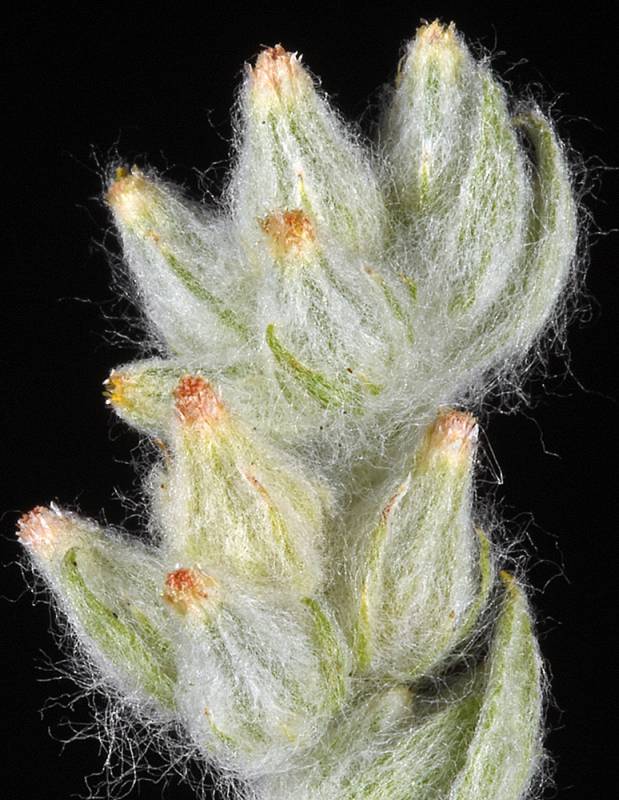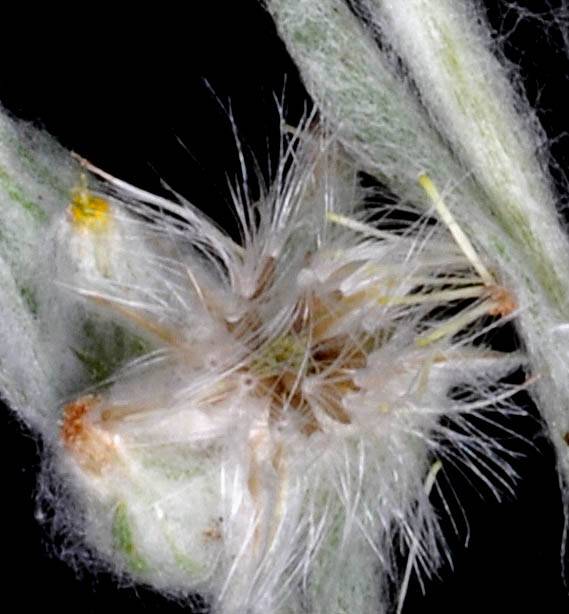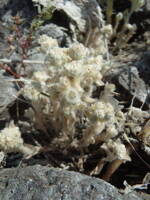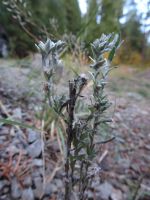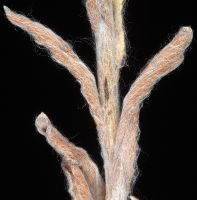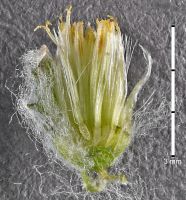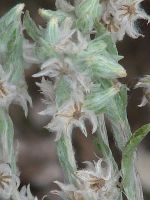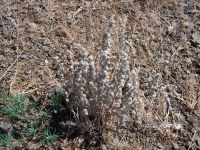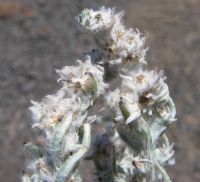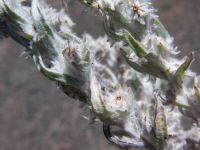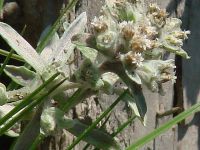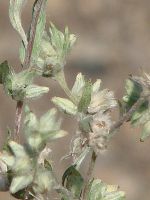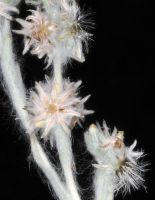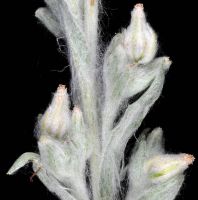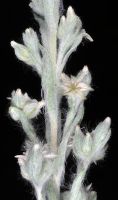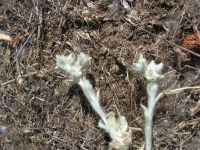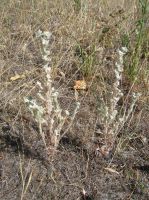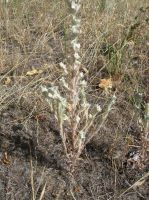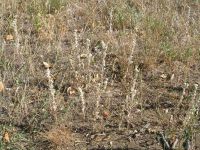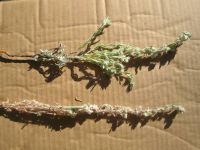Distribution: Occurring chiefly east of the Cascades crest in Washington; Alaska to Oregon, east to the northern Rocky Mountains, northern Great Plains, and Great Lakes region
Habitat: Dry meadows, fields, roadsides, and other disturbed, open areas at low to middle elevations.
Flowers: July-September
Origin: Introduced
Growth Duration: Annual
Conservation Status: Not of concern
Pollination: Bees, flies, beetles, wasps
White-woolly annual, the simple or branching stem 0.3-5 dm. tall.
Leaves alternate, entire, erect, linear, up to 4 cm. long and 5 mm. wide.
Inflorescence elongate, the heads 3-5 mm. high, in tight clusters; involucre bracts few, but woolly, concave bracts on the receptacle resemble an involucre; flowers whitish, the outer several series pistillate, fertile, without pappus and subtended by the bracts; the inner flowers sterile, few, without bracts but with capillary pappus.
Achenes small, nerveless.
Publication: Sp. Pl. 2: add. 1753.
Oglifa arvensis (L.) Cass.
PNW Herbaria: Specimen records of Filago arvensis in the Consortium of Pacific Northwest Herbaria database
WA Flora Checklist: Filago arvensis checklist entry
OregonFlora: Filago arvensis information
E-Flora BC: Filago arvensis atlas page
CalPhotos: Filago arvensis photos

